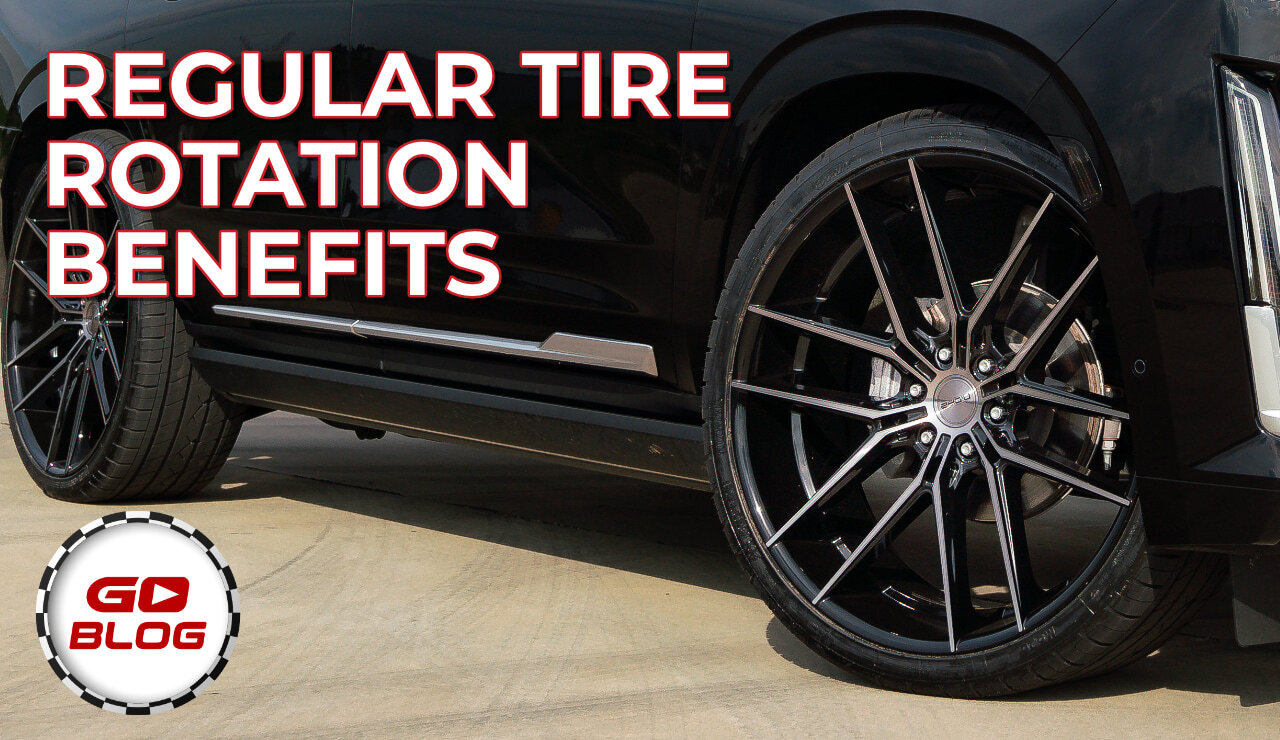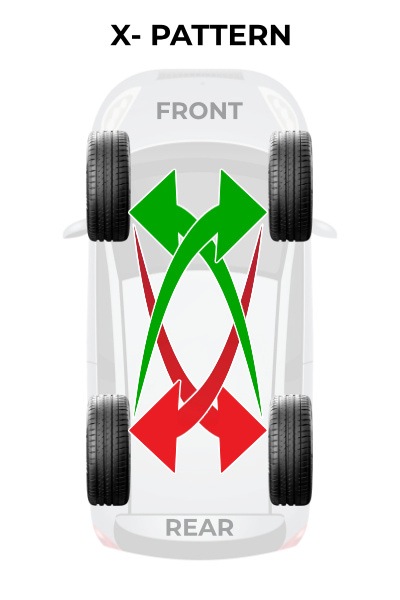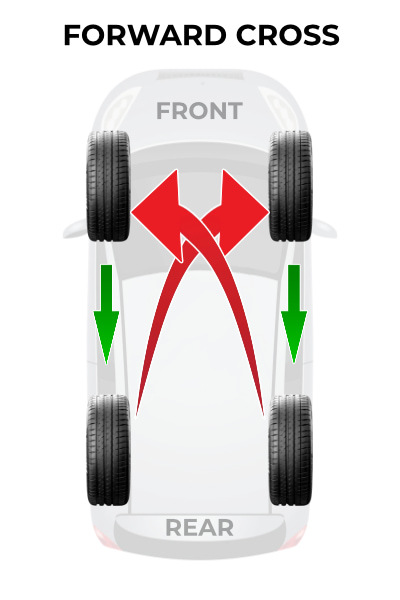The Impact of Tire Rotation on Performance and Safety
Posted by WheelSetGo on 22nd Jul 2024

The Impact of Tire Rotation on Performance and Safety
Tires are the unsung heroes of our vehicles, maintaining contact with the road and ensuring smooth rides. However, their role is more critical than many realize. Regular tire rotation is one of the simplest yet most effective maintenance practices to ensure optimal performance and safety. This blog post delves into the benefits of tire rotation and provides a step-by-step guide to help you perform it correctly.
Why Tire Rotation Matters
1. Even Tire Wear:
Tires wear at different rates depending on their position on the vehicle. Front tires, especially on front-wheel-drive vehicles, bear more weight and are responsible for steering, which accelerates their wear. Regular rotation ensures all tires wear evenly, extending their lifespan.
2. Improved Performance:
Uneven tire wear can lead to imbalanced handling and reduced traction. By rotating your tires, you maintain consistent performance and handling characteristics, which is crucial for safe driving, particularly in adverse conditions.
3. Enhanced Safety:
Worn tires can compromise your vehicle's braking efficiency and increase the risk of blowouts. Regular rotation helps maintain even tread depth across all tires, ensuring maximum contact with the road and reducing the likelihood of accidents.
4. Cost Savings:
Replacing tires can be expensive. By rotating them regularly, you can avoid premature tire replacement and save money in the long run. Additionally, even tire wear can improve fuel efficiency, further cutting costs.
5. Optimal Warranty Adherence:
Many tire manufacturers require regular rotation as part of their warranty conditions. Adhering to these guidelines ensures you remain eligible for warranty claims if needed.

How Often Should You Rotate Your Tires?
The general recommendation is to rotate your tires every 5,000 to 7,500 miles, although it's always best to consult your vehicle's owner's manual or tire manufacturer's guidelines. Regular rotations should be part of your routine maintenance, ideally performed during oil changes.
Best Tire Rotation Patterns Explained
The best tire rotation pattern for your vehicle depends on several factors, including the type of tire, the drive configuration of your vehicle, and whether your tires are directional or non-directional. Here are some recommended patterns based on different scenarios:
For Tires of Uniform Size and Non-Directional:
1. Rearward Cross (Rear-Wheel Drive Vehicles):
In this pattern, the rear tires are moved to the front axle and kept on the same side, while the front tires are moved to the opposite sides of the rear axle. This pattern ensures even wear across all tires.

2. X-Pattern (All-Wheel Drive and Four-Wheel Drive Vehicles):
This pattern involves moving all tires diagonally. For example, the front left tire moves to the rear right position, and the rear right tire moves to the front left position. This helps distribute wear evenly, especially for vehicles with a balanced weight distribution.

3. Forward Cross (Front-Wheel Drive Vehicles):
Here, the front tires are moved straight back to the rear axle, while the rear tires are moved forward diagonally to the opposite sides of the front axle. This pattern helps manage the higher wear rate on front tires in front-wheel-drive vehicles.

For Uniform Size and Non-Directional Tires with a Full-Size Spare:
Including a full-size spare in your rotation helps ensure all five tires wear evenly, which is particularly important for all-wheel-drive and four-wheel-drive vehicles to prevent drivetrain strain.
1. Rearward Cross (Rear-Wheel or Four-Wheel Drive Vehicles):
In this pattern, the rear tires move forward to the front axle, the spare moves to the right rear position, the right front tire moves diagonally to the left rear position, and the left front tire becomes the new spare.

2. Forward Cross (Front-Wheel Drive Vehicles):
The rear tires move diagonally to the front axle, the right front tire becomes the new spare, the spare moves to the right rear position, and the left front tire moves directly back to the left rear position.

For High-Performance and Directional Tires:
1. Side-to-Side (Different-Sized Performance Tires on Front and Rear Axles):
Tires are swapped with their same-sized counterparts on the same axle. For example, the front left tire switches with the front right tire, and the rear left tire switches with the rear right tire. This pattern ensures the directional tread pattern remains correct while balancing wear.

2. Front-to-Back (Directional Tires):
All tires are moved from one axle to the other while staying on the same side. For example, the front left tire moves to the rear left position, and the rear left tire moves to the front left position. This pattern maintains the directional tread orientation.

Wrapping Up
Regular tire rotation is essential for maintaining performance, safety, and cost savings. It ensures even tire wear, better handling, and a longer tire lifespan. Whether you rotate your tires yourself or have a professional do it, this practice is key to vehicle safety and efficiency.
At WheelSetGo, we offer a wide selection of high-quality tires for all vehicles. For new tires or expert advice, call us at 320-247-6160. Our team is here to help you get the best driving experience possible. Keep your tires rotating and drive safely with WheelSetGo!
